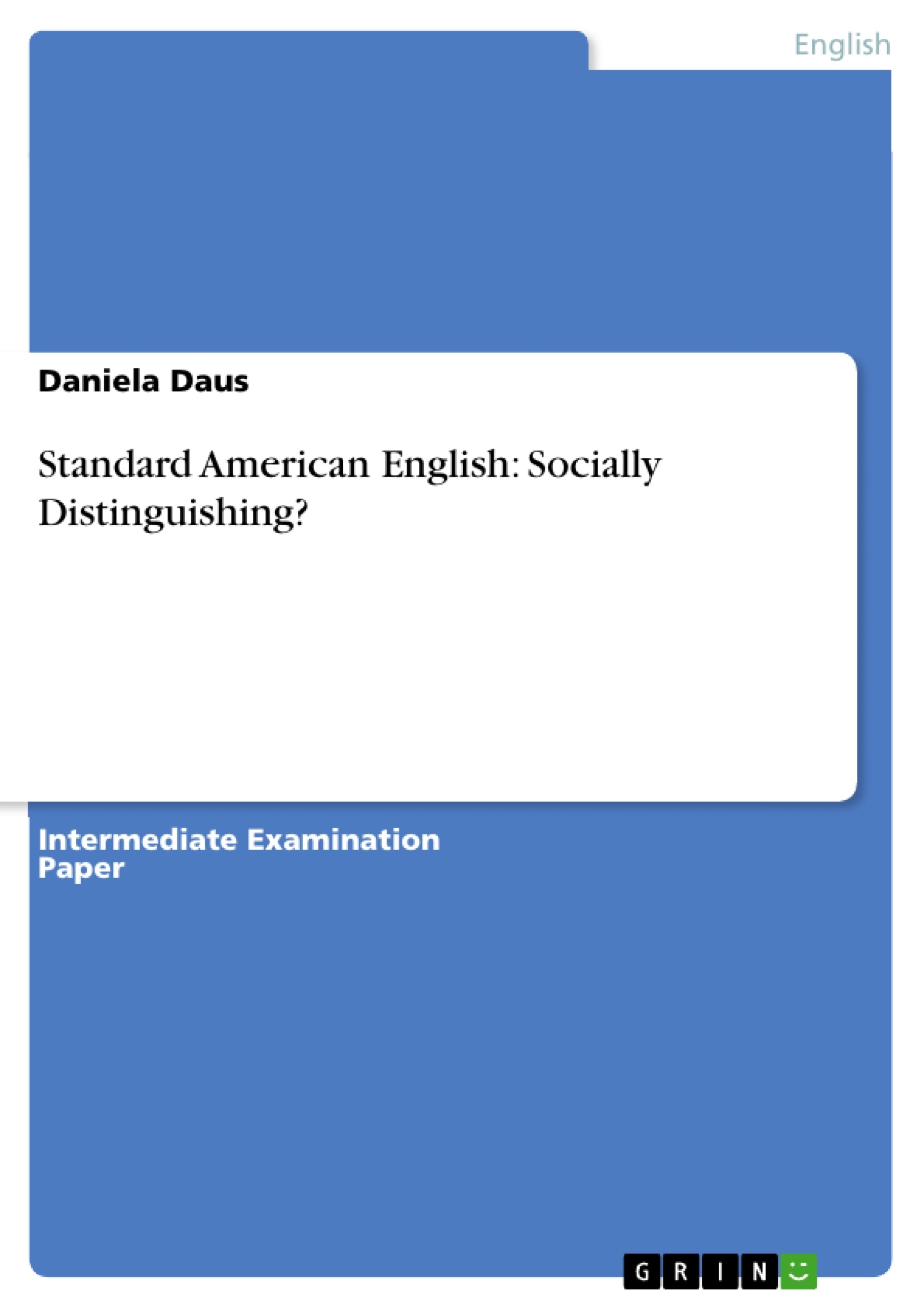Language variation could also be called „. . .the most basic and fundamental of human socialisation tools.” You need language to express yourself, to learn things, to communicate and to get educated. Without language, an independent life is hardly to live. As long as people speak, there always have been dialects and individual ways of speaking in one language. British English for example, during the twelveth and thirteenth century, was spoken in four varieties, besides French and Latin. Throughout the fourteenth and fifteenth century, the more unified Great Britain needed some kind of “Standard”, to cope with official tasks and affairs. So, at some point, it seems necessary to compromise on one way of speaking for official matters. This paper will focus on “Standard American English” as a sociolinguistic tool: A brief history of American English will be given and definitions of “Standard American English” will be discussed. The central question of this paper will be: Why there is a need for the so-called “Standard”? Whom does it serve? Is it an “ideology” of the upper classes to distinguish them also linguistically from the lower classes? Or is the function of “Standard American English” solely to enable the American people to communicate on an even level, despite the various dialects? Further, the example of New York City speech will be given, to show that “Standard” seems to be necessary for “upward mobility”.
Table of Contents
- 1.0 Introduction
- 2.0 A Brief History of American English
- 3.0 Standard American English
- 3.1 An Approach to a Definition of “Standard American English”
- 3.2 \"Standard\" - Socially Promoting, or Socially Distinguishing?
- 4.0 Conclusion
- 5.0 Bibliography
Objectives and Key Themes
This paper aims to analyze "Standard American English" as a sociolinguistic tool, exploring its history, definitions, and social implications. It delves into the reasons for its emergence, the groups it serves, and its potential role as a marker of social distinction. The paper also examines the influence of "Standard American English" on upward mobility, using the example of New York City speech.
- The historical development of American English and its divergence from British English.
- Definitions and characteristics of "Standard American English."
- The social role and function of "Standard American English" and its potential for social distinction.
- The impact of "Standard American English" on upward mobility.
- Dialect variation and its relationship to "Standard American English."
Chapter Summaries
- 1.0 Introduction: This chapter introduces the concept of language variation and its importance in human socialization. It establishes the significance of "Standard American English" as a sociolinguistic tool and outlines the paper's central question: the role and purpose of "Standard American English" in American society.
- 2.0 A Brief History of American English: This chapter explores the historical development of American English, highlighting its origins in Early Modern English and its divergence from British English. The chapter explains how factors like geographical separation, migration patterns, and political independence contributed to the formation of distinct American dialects.
- 3.0 Standard American English: This chapter delves into the definition and characteristics of "Standard American English." It examines the concept of "standard" as a tool for social promotion or distinction and explores its potential social implications.
Keywords
The main keywords and focus topics of this paper include "Standard American English," "dialect variation," "sociolinguistics," "social distinction," "upward mobility," "language history," and "American English." The paper examines these concepts in relation to the social role and function of "Standard American English" in American society.
- Citar trabajo
- Daniela Daus (Autor), 2004, Standard American English: Socially Distinguishing?, Múnich, GRIN Verlag, https://www.grin.com/document/53331



